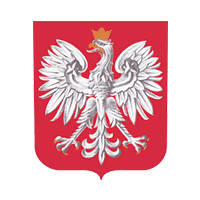Dawid SZURGACZ, Piotr CHYROWSKI, Konrad TRZOP
The process of designing a longwall powered support is extremely complex and requires many operations related to the creation of a complete machine. The powered support section is one of the basic elements of the longwall system. The implementation of the support that meets the guidelines of the manufacturer and user, requires an endurance analysis at the design stage conducted according to the regulations in force. The main objective of the research was to perform the analysis of the ultimate strength of selected elements of the designed powered support section. The research was carried out with the use of special software that uses the finite element method. The article presents the analysis of the strength limits done with the help of the finite element method, determining the strength of selected elements of the longwall support section. The solutions proposed included changes in the structure and properties of the material in the design process. The aim of the proposed solution was to obtain a model with strength value that meets safety standards. The research results are a valuable source of knowledge for designers. Solutions of this type set examples for spatial models of the longwall support section being designed nowadays. The analysis presented in the article, together with the results of the research and the conclusions resulting from them, may improve the safety and effectiveness of powered supports.
Piotr KOZIOŁ
An important role in the practice of making public information available is played by its division into simple and processed information, as access to the latter is limited to cases of particular importance for the public interest. The first type includes information already possessed, which does not require taking any additional steps to be produced, prepared or collected. Processed information, on the other hand, requires additional involvement in its production or preparation according to the criteria indicated by the applicant, including when the scope of the application requires actions that interfere with the normal course of action of the administration authority. Information generated in this way - despite the fact that it consists of a lot of simple information - is considered processed information. In the case of a decision to refuse to provide processed public information, the provisions of the Code of Administrative Procedure shall apply to it, guaranteeing the applicant the possibility of appealing against this refusal. In the case of a refusal and discontinuation of proceedings, this code applies to the entire process of their issuance. Classification of information as one of the aforementioned types requires an individual assessment each time. Making the processed public information available also requires that the person interested in obtaining it proves its usefulness for the declared purpose and the possibility of using it for its fulfilment. Although they do not have to demonstrate reasons why the fulfilment of their request will be particularly important for the public interest, or the possibility of using public information, their passivity in indicating the circumstances that would confirm the existence of these premises may be the basis for demonstrating the lack of such an interest or possibility.
Łukasz CIEŚLIK, Paweł KOCHAJ, Dawid OSOWSKI, Paweł CYNKUSZ
40 years of mining it is for LW „Bogdanka” S.A. a time of intensive development of the most interesting of the underground transport systems, which is transport using belt conveyors. The article presents the elements of the transport system, the implementation of which had an impact on its functionality and efficiency, so that it is now possible to use underground devices that ensure transport capacity of up to 4300 t/h of excavated material in main haulage lines and the ability to separate gangue from excavated material in the transport process carried out under up to 3000 tonnes per day. Exploitation of more and more distant resources is an impulse to expand and improve the system. The prospects for the future include the expansion of the belt conveyor system enabling the transport of the crew to work places and the development of the transport management system by an operator located on the ground.



